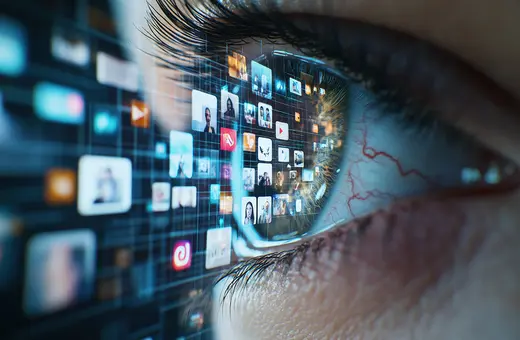Since the work of Milton Erikson, psychologists now know beyond a doubt that one’s body language is vital for communication, and in many respects more important than spoken language. Whilst experts vary in their estimates, most agree that around 70-93% of all communication is non-verbal. Yet, while rates of global verbal literacy have risen, most of us are almost completely nonverbally “illiterate” argue psychologists and body language experts Alan Crawley and Ronald Riggio. Resolving this would require a radical shift in our outlook on education.
Every individual worldwide wants to be able to speak and write – to be verbally literate. When it comes to nonverbal communication, however, there is a paradox: we are instinctive “experts,” yet simultaneously illiterate. From birth, we are able to communicate nonverbally, through various “body language” channels, including facial and vocal expressions, body movements, and touch. Through trial and error, we may get better at communicating nonverbally, but as we navigate delicate social situations – such as a job interview, a public speech, or making a sincere apology – we may stumble and realize that we really don’t know much about nonverbal communication at all.
Why? Unlike our native spoken language, nonverbal communication is not a true language. The term “body language” is a misnomer. In language, words have particular meanings. There is syntax and structure to language, and grammatical rules. A particular nonverbal cue, such as a head nod, or a gesture, can mean many things, depending on the person, the context, and on other nonverbal cues that accompany it. Unlike language, there is no dictionary for “body language.”
___
Unlike our native spoken language, nonverbal communication is not a true language.
___
Think of this: by the time we finish school, we have spent thousands of hours learning our native verbal language in classrooms. One to two hours are spent every day in elementary school on language arts, and our learning of language increases with secondary and higher education. We read books and use reference materials to understand the meaning and subtle nuances of language. We are tested. In fact, our vocabulary – our stored knowledge of the meaning of words – is a good predictor of not only our level of learning/achievement, but it can be a proxy for our intelligence, or IQ. However, we receive no formal education or training in body language. For most of us, what we do learn about nonverbal communication occurs informally, from occasional feedback from parents, family members and friends (“Wipe that smirk off your face, Mister!”). In comparison to verbal language, we are nonverbally “illiterate.” With essentially no formal training in school, we have to learn body language informally, with some of us being better at it, some of us worse, and none of us really being masters of nonverbal communication. Our research shows that there is wide variance in peoples’ abilities to communicate nonverbally. Like verbal language acquisition, there is little evidence that this is due to some inborn capacity to understand nonverbal communication. Instead, we pick it up over time, from our experiences communicating with others.
 SUGGESTED READING
The Ethics of Online Communication
By Onora O'Neill
SUGGESTED READING
The Ethics of Online Communication
By Onora O'Neill
This begs several questions: Should we receive some formal training in nonverbal communication? If so, what would that look like? What would be the outcome(s) of improving our skill in nonverbal communication be?
Fortunately, research in nonverbal communication can provide some of the answers. A simple model that we use is to focus on three different forms of nonverbal skill: expressiveness, sensitivity, and control, or regulation, of nonverbal communication.
___





















Join the conversation